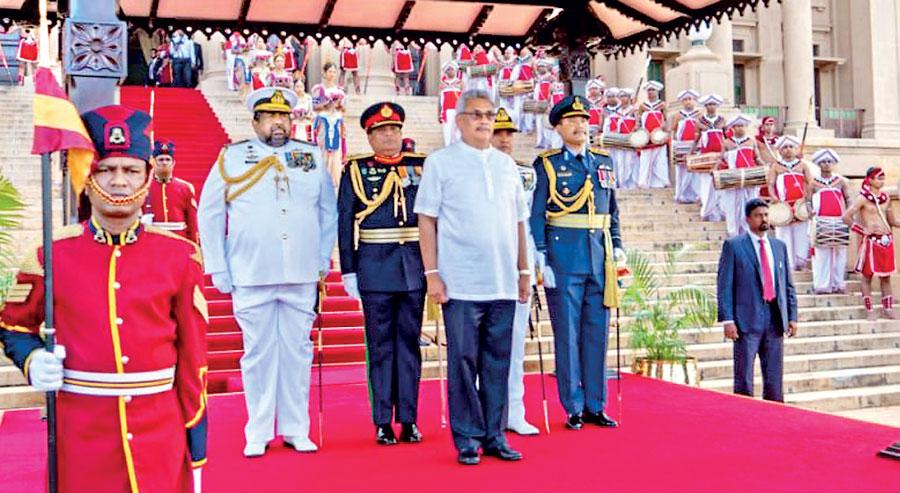02 Jan 2020 - {{hitsCtrl.values.hits}}

 Sri Lanka’s much anticipated presidential election in November 2019 was won convincingly by Gotabaya Rajapaksa.
Sri Lanka’s much anticipated presidential election in November 2019 was won convincingly by Gotabaya Rajapaksa.
The presidential win is expected to boost the fortunes of the Sri Lanka Podujana Peramuna (Sri Lanka People’s Front), the breakaway new political party fronted by former president Mahinda Rajapaksa, at the forthcoming parliamentary elections in early 2020.
Sri Lanka’s formidable political dynasty which ruled the country from 2006–2014 appears to be firmly ensconced in power once again, less than five years after a shock defeat in January 2015.
Their return marks the end of a fractious governing arrangement in the interim — a cohabitation of Sri Lanka’s two dominant rival parties.
Voters’ impatience with the government’s internal wrangling, particularly on the economic and security fronts, proved too big a hurdle for Sajith Premadasa, the newly anointed presidential candidate from the remnants of the coalition.
First priority
For the incoming government, reviving an ailing economy — witnessing an extended period of low growth and continual increase in public debt — is the first priority. The second is addressing Sri Lanka’s deep sense of unease following the devastating terror attacks in April 2019 from groups supposedly aligned to global Islamist militancy that claimed more than 250 lives.
On both fronts, election pledges by Gotabaya Rajapaksa for swift and decisive action appealed to the voters. In particular, as a tried and tested technocrat that oversaw the defeat of separatist terrorism in Sri Lanka, he had a clear edge over his opponent. The promise too of firm leadership — with a heavy dose of populist measures — to steer the economy appears to have converted large sections of Sri Lanka’s business community.
Electoral outcome not unique
Still, the handsome win points to deep socio-political divisions in Sri Lanka. He was voted in primarily by the majority Sinhala population — no easy feat going by previous elections where candidates depended on minority ethnic groups to carry them to victory.
But Sri Lanka’s electoral outcome is not unique, with divisions in societies across the world manifesting in varying forms of populist nationalism. Be it the election of US President Donald Trump, the Brexit referendum or the swing towards ‘strong’ leaders in Asian and Latin American countries, voters appear willing to consider new directions.
For Sri Lanka, the new direction is a departure from a career politician towards a tested technocrat who is pledging to safeguard the country’s security and sovereignty and to deliver merit-based economic opportunities to all.
How the government performs in office over the next few months will be a good predictor of its parliamentary election outcomes. Economic relief measures have already been implemented with a slew of tax cuts. These will need to be carefully balanced to keep fiscal targets largely in line, as Sri Lanka prepares for fresh rounds of foreign commercial borrowing to rollover sizeable foreign debt settlements. Retaining investor confidence will be all the more critical as a three-year IMF programme winds down by mid-2020.
The government will also face fresh challenges on the international front on accountability issues stemming from past allegations of human rights violations. The new President’s first visit to New Delhi came with assurances to be frank and avoid misunderstandings, while calling on China to revisit security and other related concerns on the 99-year lease of the strategically important Hambantota Port inked by the previous government.
This was the first signal that the government intends to tread more cautiously in balancing its relations with regional powers, as it aims to align Sri Lanka more closely with the Asian region.
This makes sense — Sri Lanka’s longer-term economic interests are best served by closer integration with Asia’s emerging economies as the country aims to break into supply networks and new markets. Deepening economic integration is also a source for development finance, foreign direct investment (FDI) and technology transfer.
With the presidential election passed, Sri Lanka is set on a new direction. The economy is likely to rebound, even if only because of renewed investor optimism of political and policy stability and an extended period of low growth.
The added stimulus of tax cuts can be more easily managed if the government sets modest public investment targets, cuts back on unnecessary current spending and relies more on private investment and FDI to drive short-term growth.
First tentative steps
An economic revival will help the government take the first tentative steps to address the problem of voters left out, especially in the Northern and Eastern parts of Sri Lanka. Reconciliation measures in the form of political solutions were not heavy in the President’s pre-election manifesto. But, in power, he has committed to work for all.
In the end, building an inclusive Sri Lanka — with effective checks and balances on executive power — is what all Sri Lankans aspire to.
(Courtesy East Asia Forum)
(Dushni Weerakoon is the Executive Director and Head of Macroeconomic Policy Research at the Institute of Policy Studies of Sri Lanka (IPS)
26 Dec 2024 24 minute ago
26 Dec 2024 30 minute ago
26 Dec 2024 1 hours ago
26 Dec 2024 2 hours ago
26 Dec 2024 4 hours ago